Goat Island is New Zealand’s first marine reserve, created in 1975 and officially opened in 1977. Extending from Cape Rodney to Okakari Point, the marine reserve includes the waters 800 m from shore including Te Hāwere-a-Maki/Goat Island.
Motu Hāwere is of central importance to the identity of Ngāti Manuhiri. The area is an iconic reminder of the early origins of Ngāti Manuhiri and their links with the earlier iwi of the area – Wakatūwhenua being the landing place of the Moekakara waka captained by Tahuhunuiarangi.
Motu Hāwere which shelters Wakatūwhenua, has the longer traditional name of Te Hāwere ā Maki. This sacred name is associated with Maki who led the conquest of the area in the late seventeenth century. Maki was the father of Manuhiri, the founding ancestor of Ngāti Manuhiri. The mana and mauri of this name and landmark, and the waters that surround it, is thus of immense significance to the iwi. The island was occupied as a pā by the Ngāti Manuhiri warrior ancestor Maeaea, who was a grandson of Manuhiri. It was on the basis of descent from Maeaea that Ngāti Manuhiri received title to Motu Hāwere in 1901.
The adjoining land was maintained as a kāinga and cultivation by Ngāti Manuhiri for many generations until after early European settlement. The land, known as the Wakatūwhenua Block, part of which forms the Leigh Recreation Reserve, was specifically reserved from sale to the Crown at the request of the Ngāti Manuhiri rangatira Te Kiri in 1861.
How did Goat Island get its name?
When early settlers started to discover New Zealand coastlines, they were aware that they could never be sure that one day, because of storm or circumstances they might find themselves marooned on some desolate piece of coast with no source of food for miles. The forests were inhabited by birds but it was very difficult to catch enough to feed the whole crew. So they introduced domesticated animals eg; Live stock.
Putting these animals on the mainland would not be of much use for they would run freely never to be seen again. But islands would keep these animals penned in so if a ship had to land up by that island a source of food is easily accessible. Some islands had a dependable supply of running fresh water and lowland forest that could be burned. These were suitable for cattle. But the smaller islands without fresh water were suitable only for goats, since goats don’t need to drink. Goats are so frugal with their water metabolism that they can thrive on a diet of foliage without water. Hence these islands were of type ‘goat’ or goat islands.
When studying the sea charts of New Zealand, you may discover that four or five Goat Islands exist. We have learnt that Goat Island Marine Reserve located north of Auckland was an island that was still on the list to place goats on, they did try to put pigs on but soon learnt pigs are good swimmers.
The Marine Life at Goat Island Marine Reserve
Snapper
There are a lot of snappers at Goat Island lately, from smaller to bigger ones ranging to 60 years old. Snapper are known for their big molars “hence called Snapper”. Don’t make the mistake of putting your finger in an adult snapper’s mouth, it can literally be crushed. Snappers are usually a reddish brown on top and a silvery white on the bottom but depending on where they live the colour changes slightly. They are easily recognized by the spiky long pectoral and dorsal fin. Young snapper have silvery blue dots on their body and as they get older the spots fade away. Snapper can be found in open water, in reefs, holes and between pins in the gulf.
Snapper like to stay close to reefs or weed to enable them to dart for shelter if attacked by a predator. At Goat Island Marine Reserve you will find the two ‘Grandaddy snappers’ who have been named by the Marine Discovery Centre as Adam and Monkey Face. They are quite large fish ageing between 60-80 years old. They love to show themselves as they are almost swimming around the reserve!
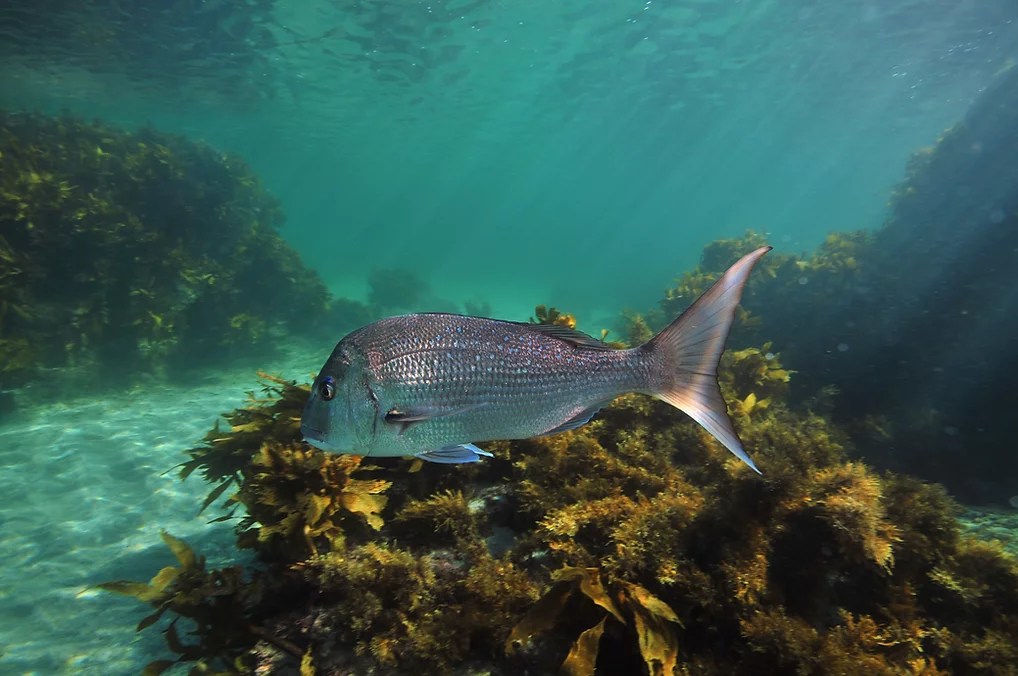
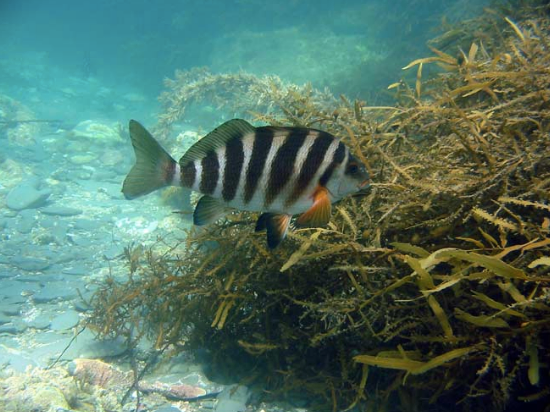
Red Moki
They live in shallow water around rocky reefs, and are active during the day. Their thick lips are used to noisily snatch crabs, sea urchins, worms and other creatures from rocks and seaweed on the seafloor. They can live up to 60 years. Red moki is a species of fish found off the North Island of New Zealand. Red Moki is extremely territorial and remains in a small single territory for its entire lifetime, often of only around 100m2. Red Moki breed in pairs for life, so you will always see two fish together otherwise one will still be searching for their life partner or are lonely for life due to losing their partner.
Leather Jacket/Kokiri
The Leatherjacket has a tough leathery skin and a distinctive retractable dorsal spine, which can give the appearance of unicorn style horn. They are common in rocky or weedy areas near the shore throughout coastal New Zealand. The leatherjacket can swim either backwards or forwards using its dorsal and anal fins. They initially feed on small crustaceans, but adult fish also eat sponges, sea squirts, and barnacles, which they scrape off the rocks with their chisel-shaped teeth.
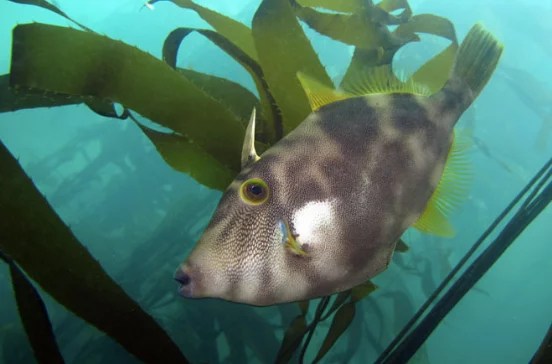
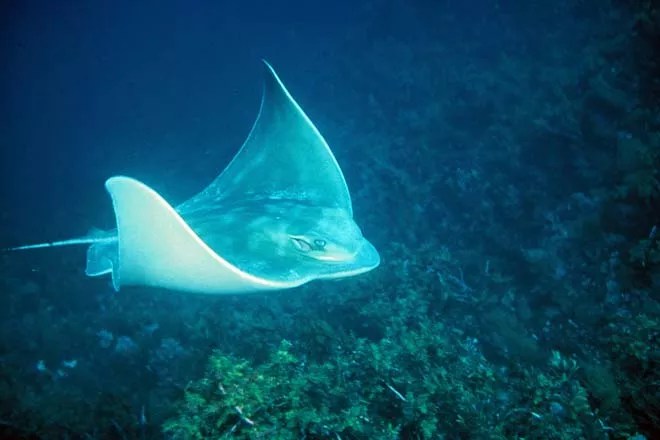
Eagle Ray
Eagle rays appear to fly through the water, gracefully beating their large pointed pectoral fins like wings. This distinguishes them from stingrays, which are rounder rays. Eagle rays are found in coastal waters and estuaries around New Zealand spending most of their time in shallow waters down to depths of 160 m. Eagle rays are generally solitary – more so than stingrays – but you will spot lots all together in shallow water during the summer months, when they come in to breed. This explains why some days we spot just one Eagle ray and other days we spot around 15.
Stingray
Stingrays appear placid as they glide through the shallows, but reaching weights of up to 350kg. They feed on crabs, mantis shrimps, molluscs, worms and conger eels. Although Stingrays are less common than the Eagle ray at Goat Island, we do get a couple that visit us at the reserve.
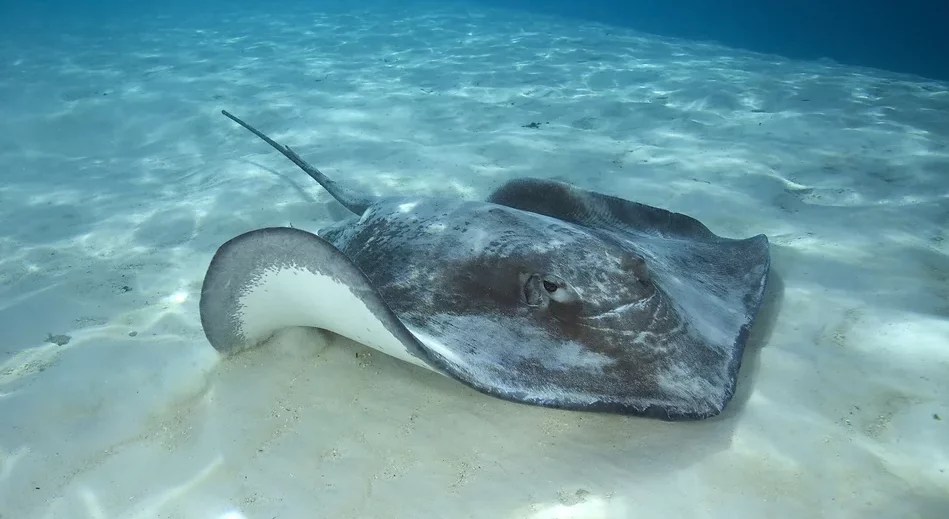
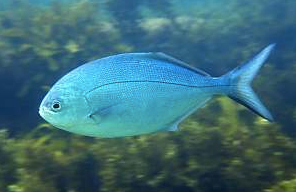
Blue Maomao
Blue Maomao are a bit more rare now at Goat Island as their natural environment is behind the island in deeper waters. Yet they do come through in big schools when they are looking for food. They are bright blue beautiful fish.
